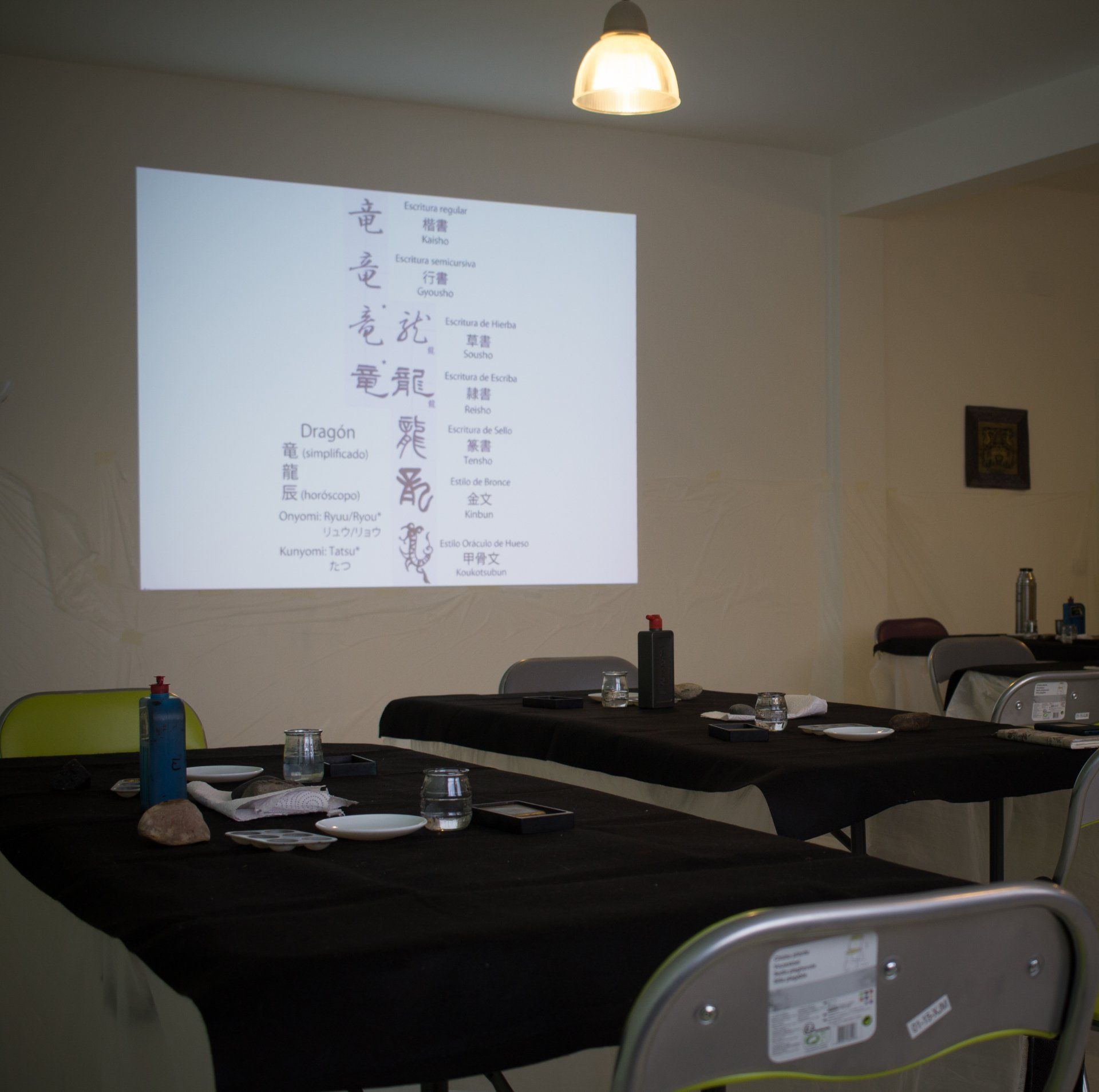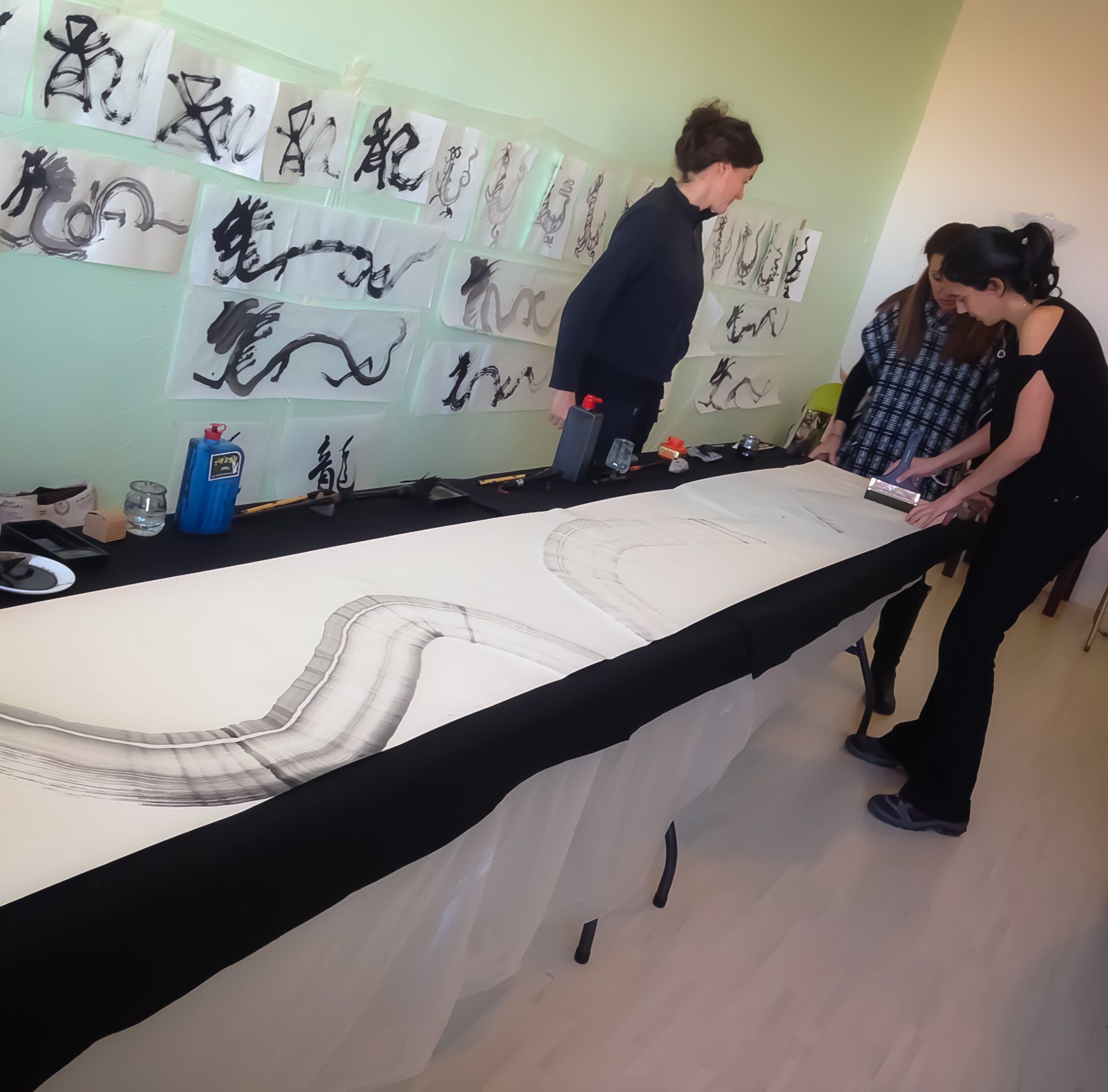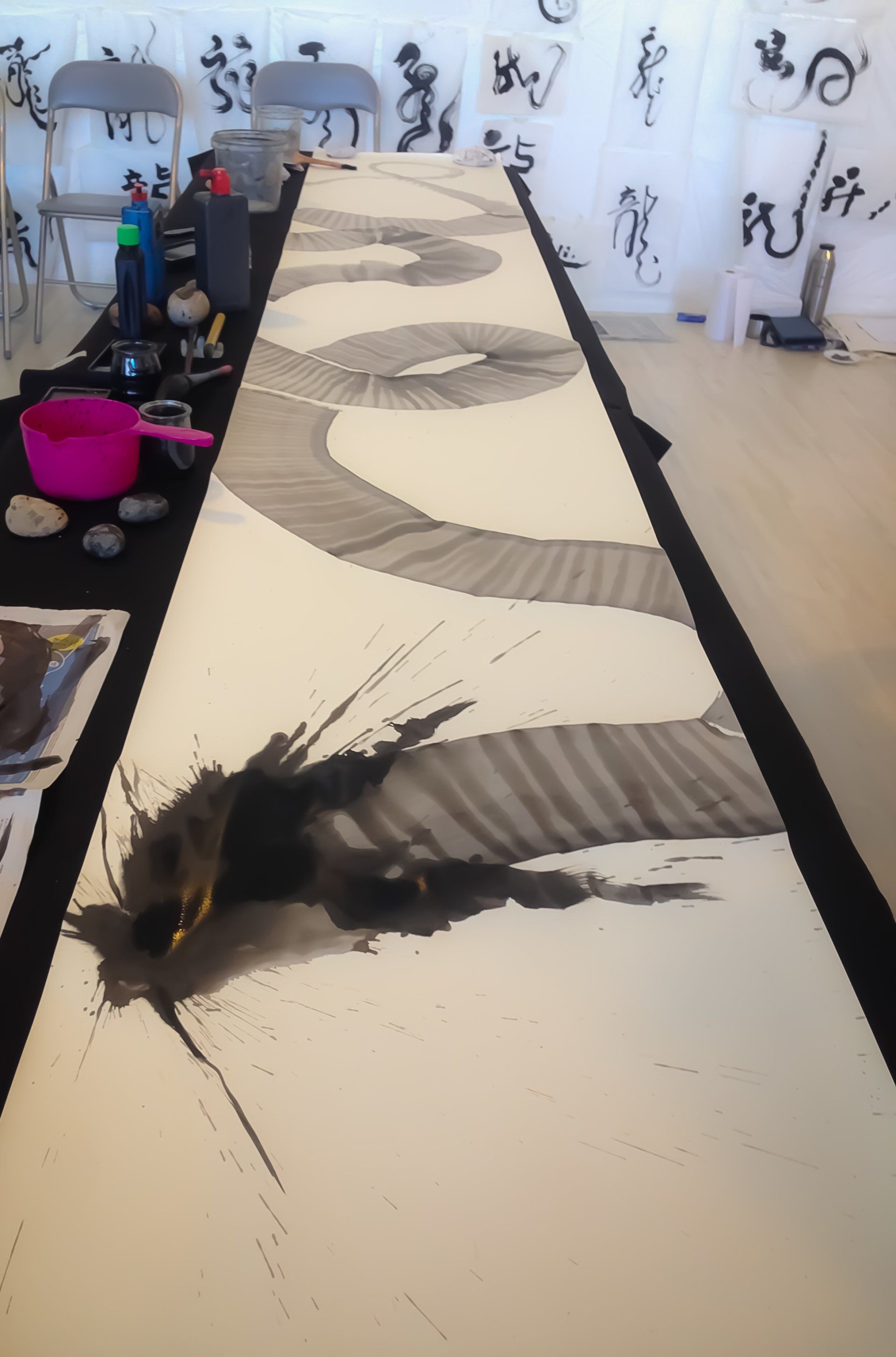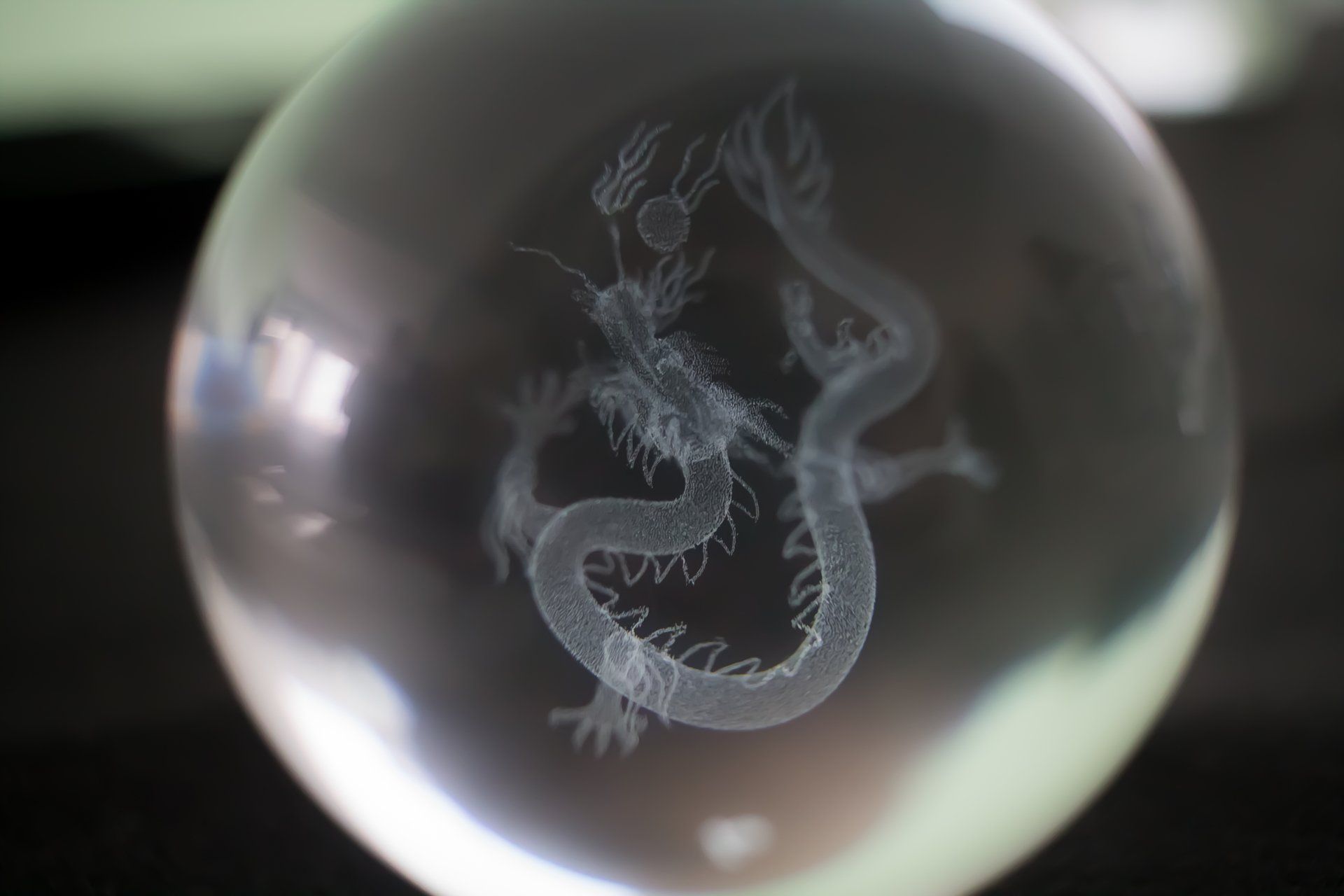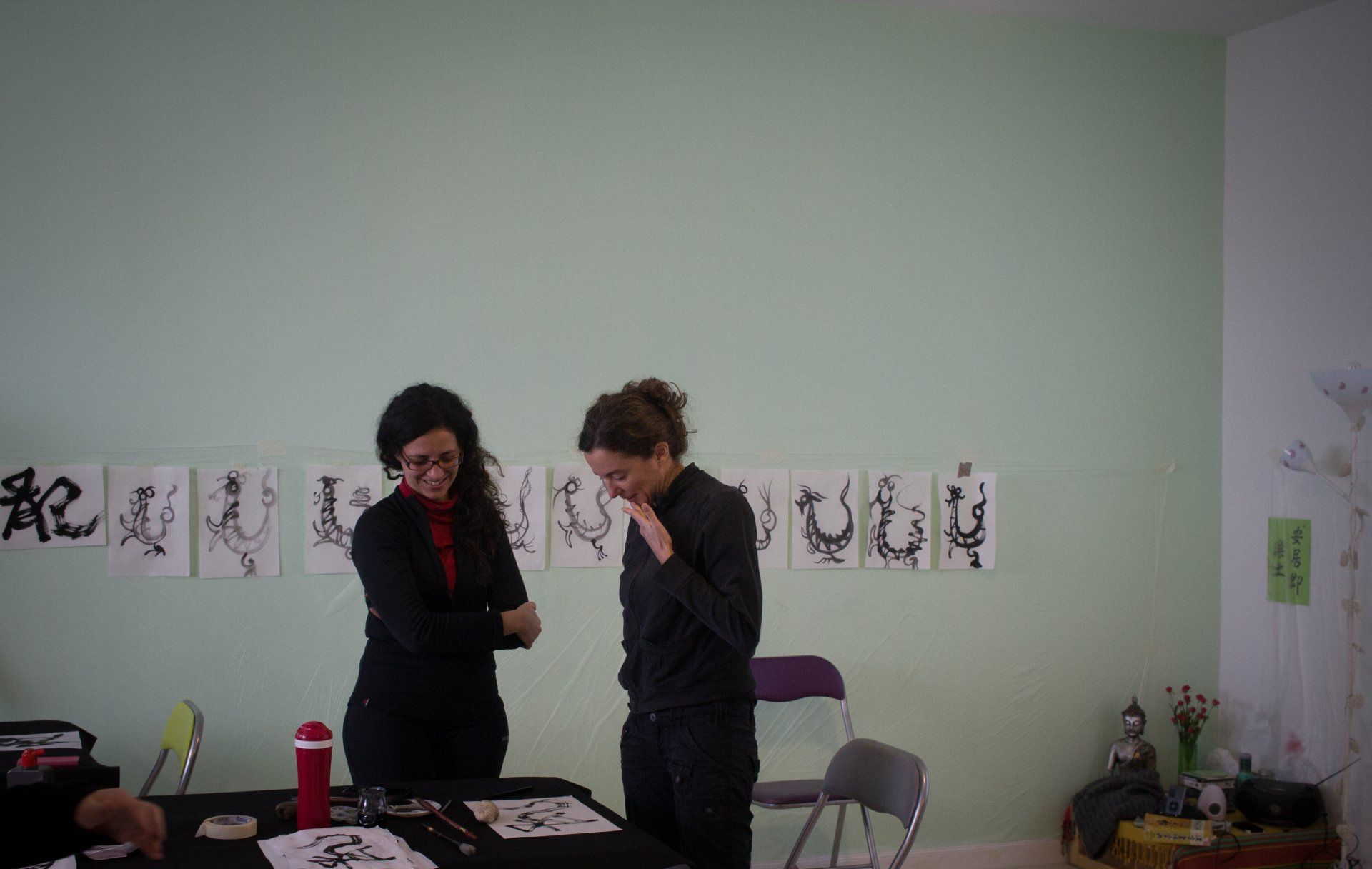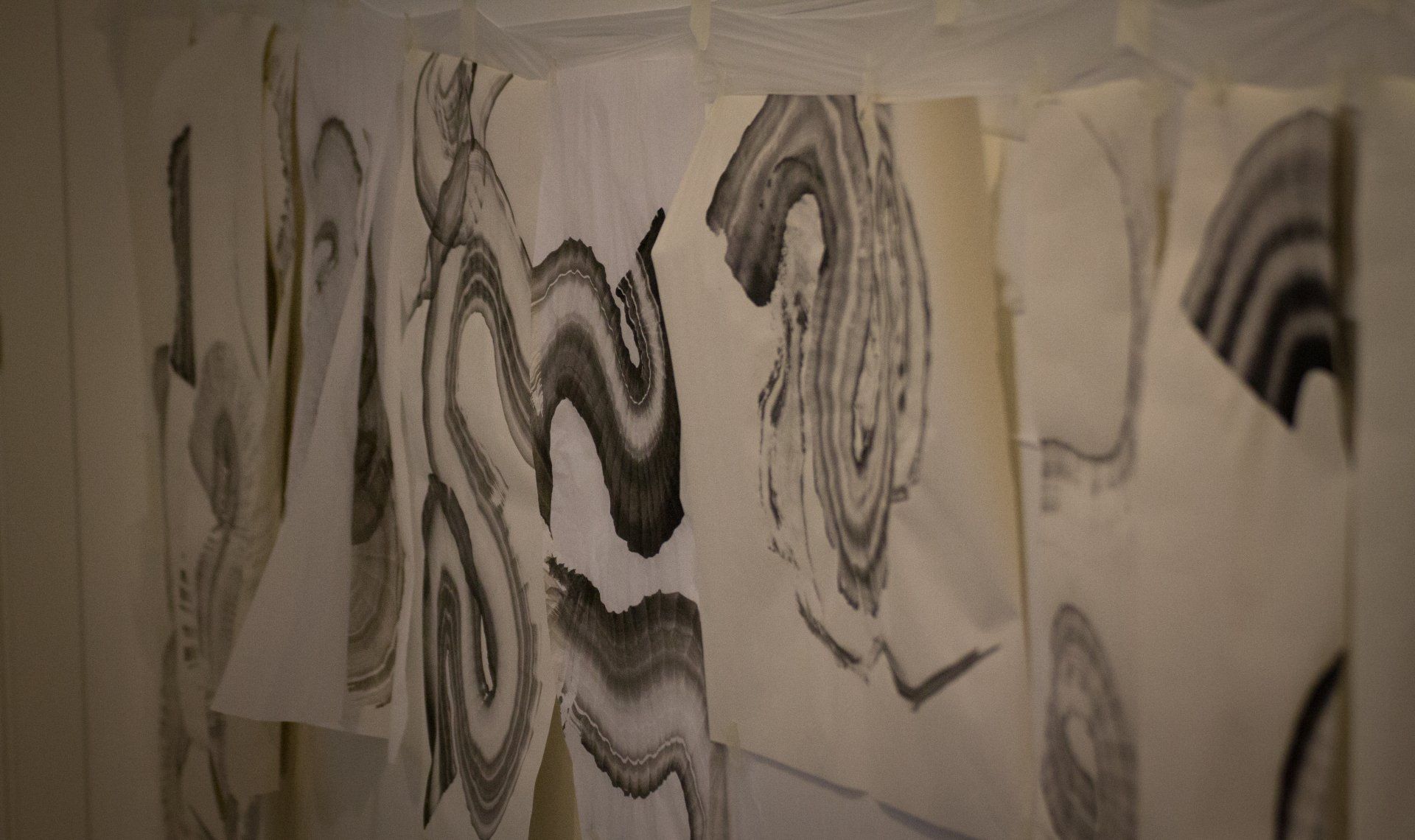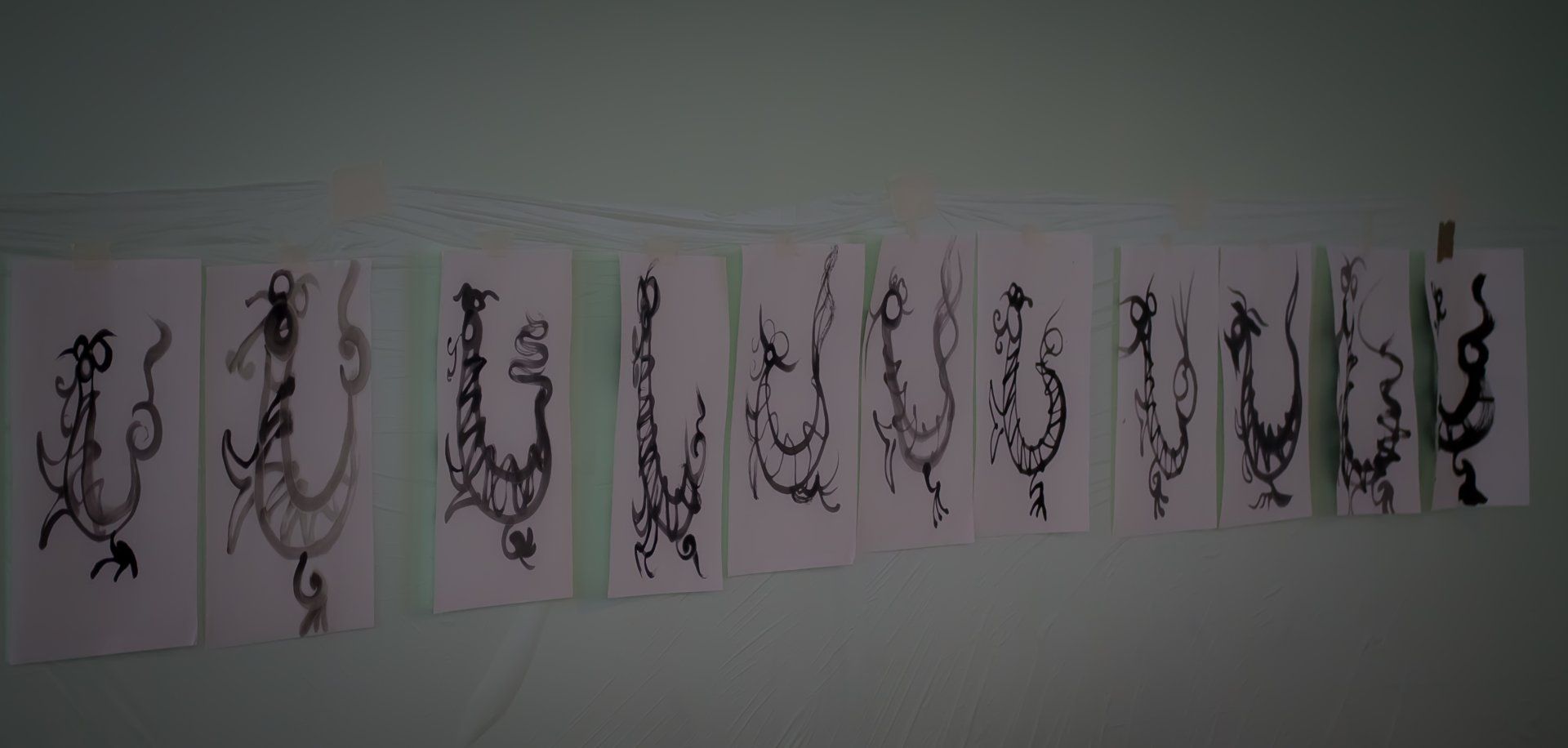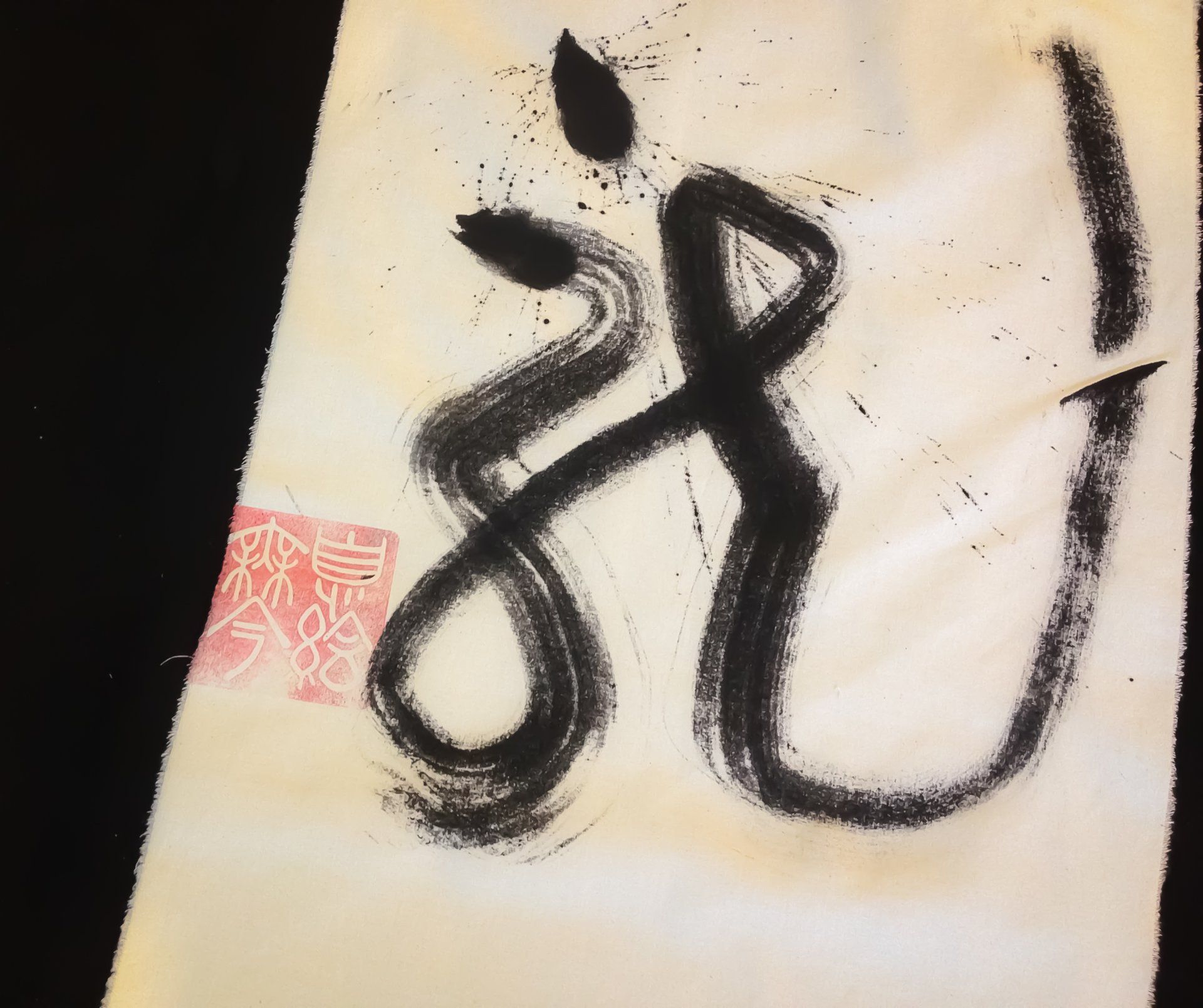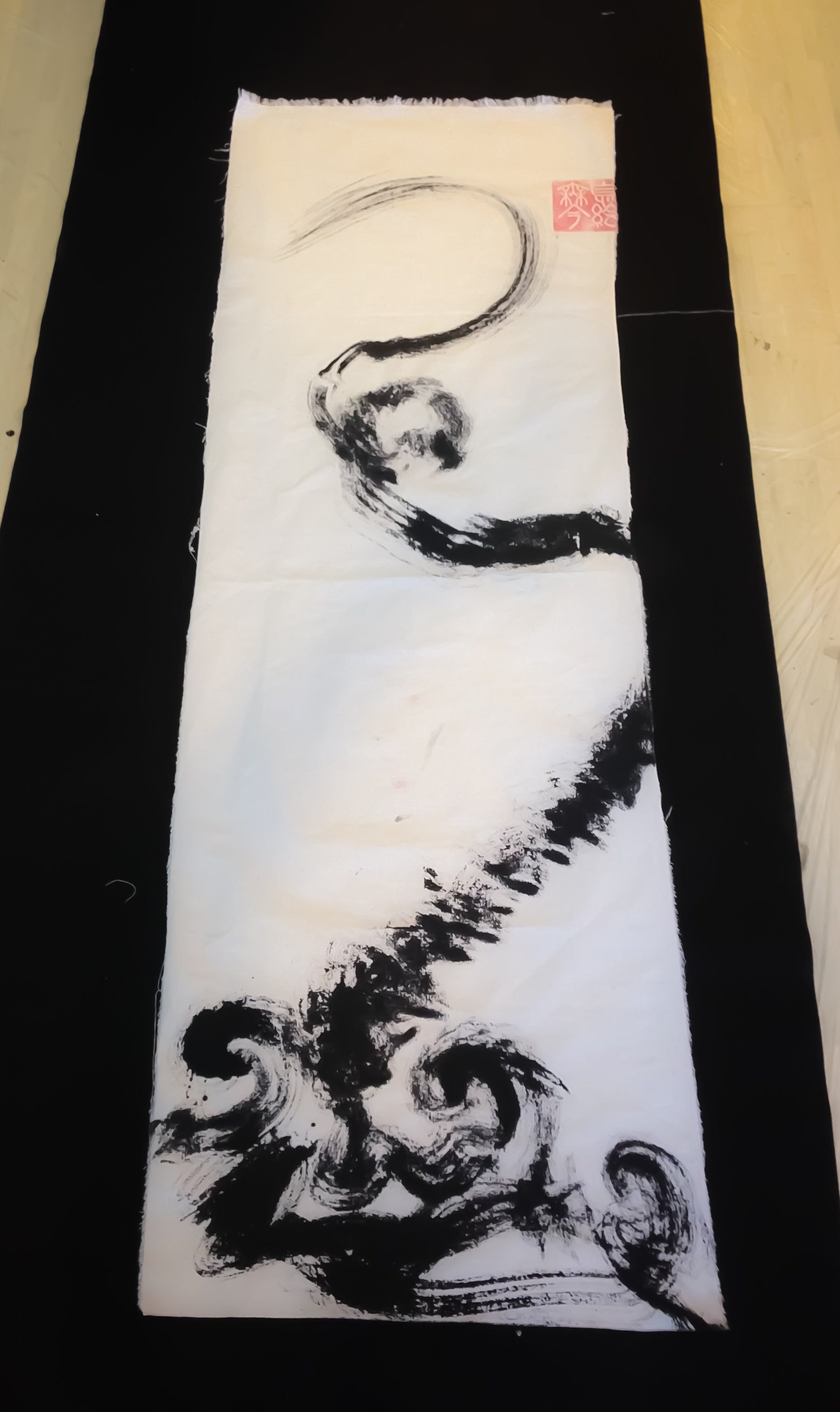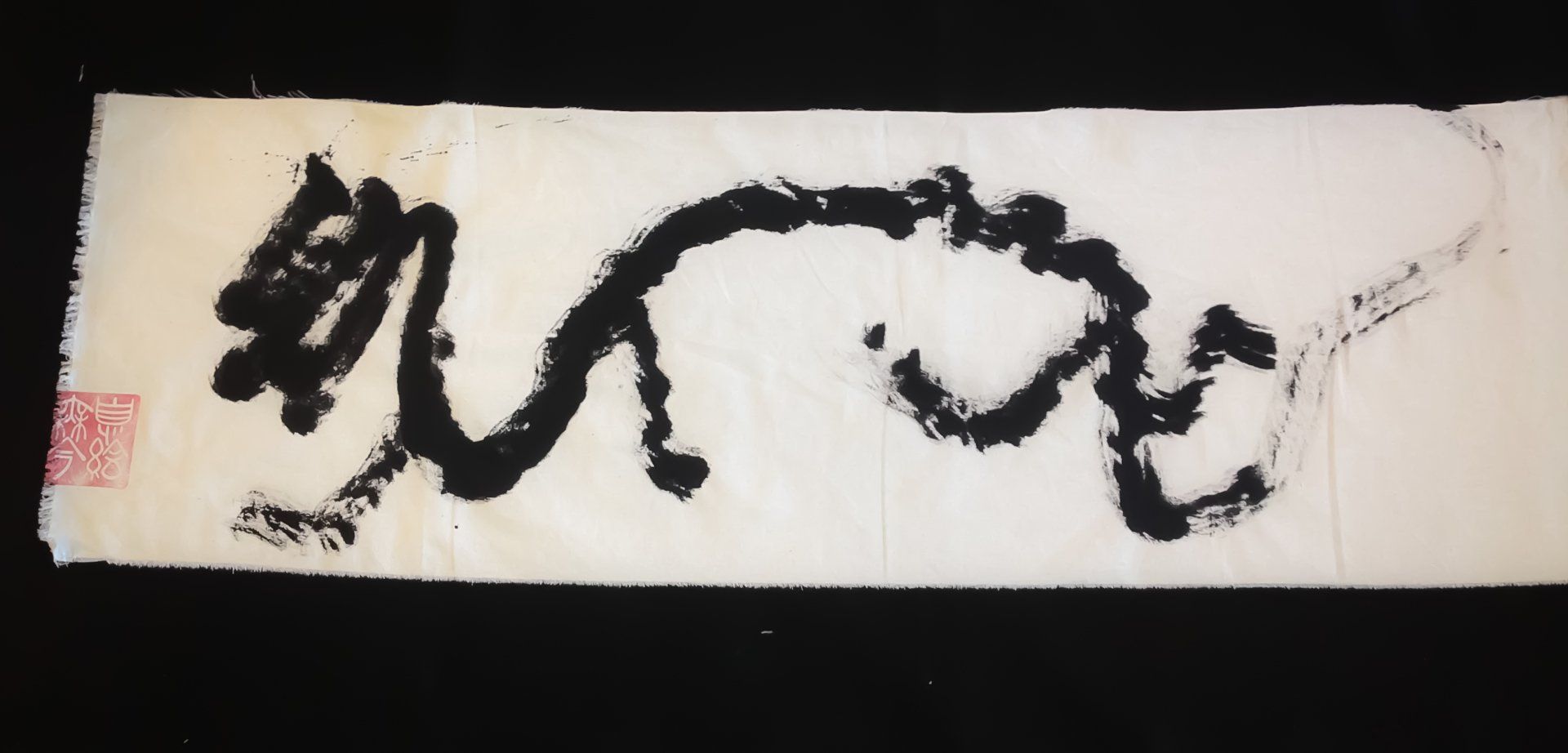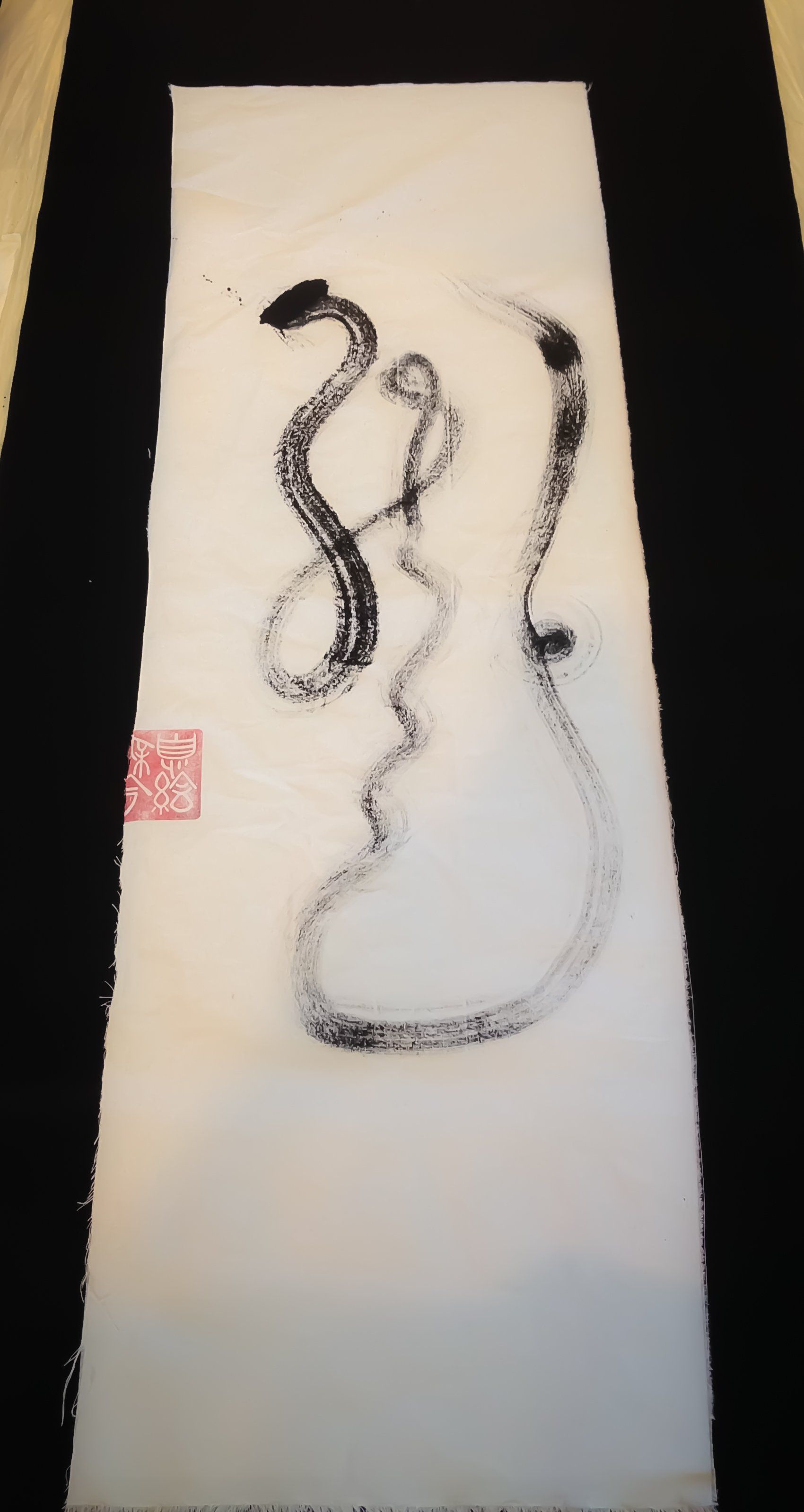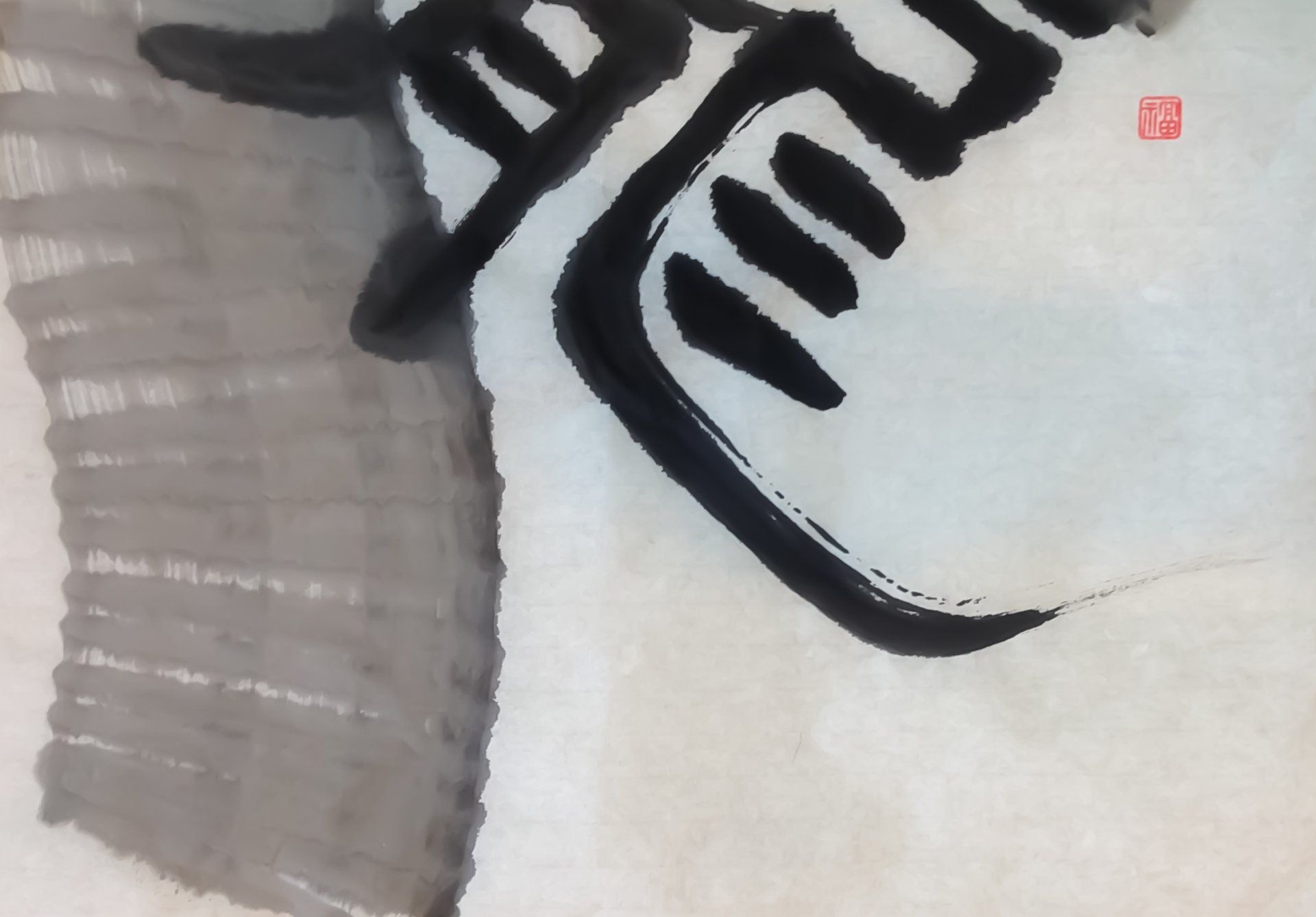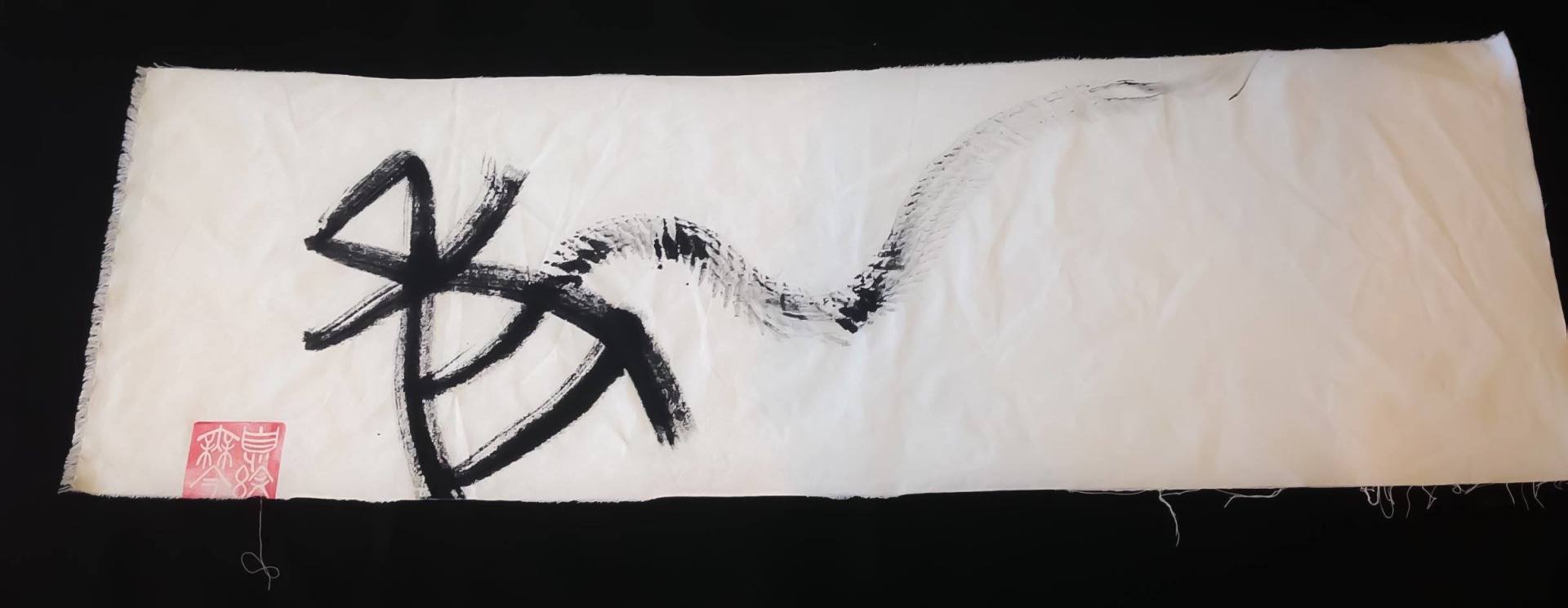"From Dragon to Dragon" “The rainbow is a beast shaped like a dragon” Shizuka Shirakawa 白川静 (1910-2006)
"From Dragon to Dragon" is a course designed especially for intermediate and advanced students in the field of Japanese painting and calligraphy. Its main objective is to work on the dialogue between the different historical styles of the dragon kanji (竜, 龍, 辰) and its transformation towards a more pictorial representation, which leads to the use of loose, spontaneous and generous gestures that may arise during the proposed activities. It is structured in four modules divided into two days, and in each of them we work simultaneously on calligraphy and painting. At the beginning of each work day we make a projection of images with which the students can approach the knowledge of different styles of representations and various ways of writing the dragon kanji. These projections appear on several occasions during the course as a useful and fun learning strategy. The proposals also include the use of different types of papers made of vegetable fibers, individual and group work, brushes of different sizes and the possibility of using our body as a way of becoming a real dragon.
The dragon is one of the oldest symbols of art in Eastern countries (we refer more specifically to China and Japan), where there are also various ways and languages to refer to it. For this ancient culture, it is not only the protagonist of many of its mythological legends, and represented in many paintings and calligraphy throughout the ages, but its great symbolic charge has given it the role of a divine and powerful being, to the point of being a faithful companion and exclusive representative of the emperors themselves throughout history in the East. For this course, we feel it is necessary to project images that provide us with visual information to understand various ways of painting the scales that cover the body of the dragon, playing with various supports, drawing ideas and learning stories. The selection of these images, many of them canonized by the History of Art, serve us -among other things- to understand the magnitude of the body in the creative process and guide us in the transformation towards true dragons. At this point it is worth clarifying that, unlike their western twins, eastern dragons do not spit fire or have wings, although they can usually fly and transform our lives thanks to their benevolent magic.





